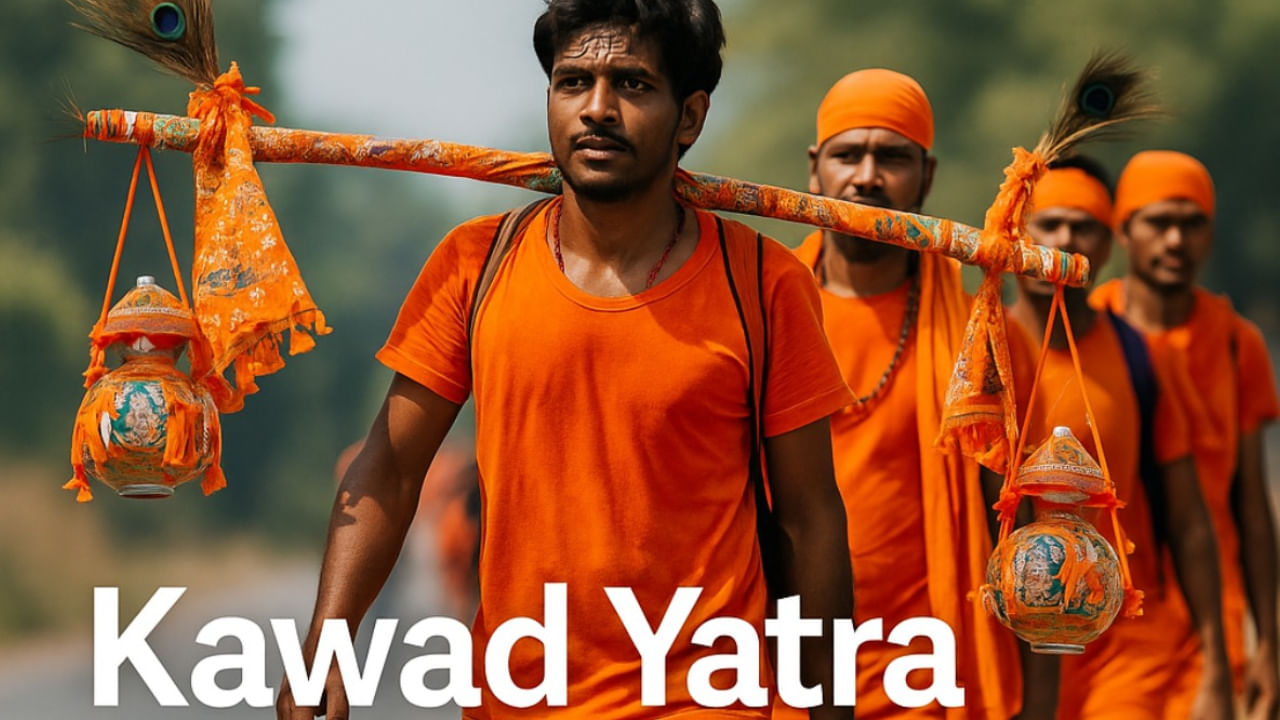Mumbai: As the holy month of Sawan approaches, North India prepares for the annual Kawad Yatra, a major spiritual pilgrimage undertaken by devotees of Lord Shiva. In 2025, the Sawan month begins on 11 July and continues until 9 August, during which millions of saffron-clad pilgrims — known as Kawariyas — carry sacred water from the Ganga to offer it at Shiva temples. This deeply symbolic act of devotion is particularly significant on Sawan Shivratri, a night believed to be highly auspicious for Shiva worship.
While the Kawad Yatra has become a prominent feature of North Indian spiritual life, its roots trace back to ancient legends and beliefs. Devotees participate not only to show faith but also to retrace mythological journeys associated with figures like Parashurama, Shravan Kumar, and Ravana. Below, we explore the key stories and historical origins behind this powerful tradition.
Who Are the Kawariyas?
During Sawan, devotees known as Kawariyas wear saffron-coloured clothing and embark on foot journeys, often covering hundreds of kilometres, to collect Ganga water (Gangajal) and offer it at Shivalingas. The yatra is especially popular in states like Uttar Pradesh, Bihar, Haryana, and Uttarakhand, and is considered a form of penance and deep devotion. The collected water is usually poured on Shivlings on Sawan Shivratri.
The Origins of Kawad Yatra: Parashurama’s Devotion
According to widely held beliefs, the first-ever Kawad Yatra was undertaken by Lord Parashurama, an incarnation of Vishnu. He reportedly fetched Gangajal from Garhmukteshwar and offered it at a Mahadev Temple near Baghpat, Uttar Pradesh. Even today, countless pilgrims retrace this route during Sawan, believing it to be a path sanctified by divine footsteps.
The Story of Shravan Kumar
Another cherished tale attributes the beginnings of the Kawad tradition to Shravan Kumar of the Treta Yuga. He is said to have carried his blind parents in a Kawad to Haridwar for pilgrimage, fulfilling their wish to bathe in the sacred Ganga. On their return, Shravan brought holy water with him — a gesture believed to have inspired the current tradition of carrying Gangajal for Shiva’s abhishek (ritual bathing).
Ravana and His Sacred Offering
Even Ravana, the king of Lanka and a devout follower of Shiva, is said to have brought Ganga water from the Himalayas to worship Lord Shiva. After Shiva consumed poison during the churning of the ocean (Samudra Manthan), his throat turned blue. It is believed that Ravana’s offering of Gangajal helped cool Lord Shiva, leading to the tradition of using this sacred water for divine soothing and healing.
Why the Kawad Yatra Matters
Beyond its spiritual intensity, the Kawad Yatra reflects themes of service, endurance, and ancestral devotion. Whether following in the footsteps of Parashurama, Shravan Kumar, or Ravana, today’s Kawariyas embody deep-rooted cultural reverence. With millions expected to participate in 2025, this ancient pilgrimage continues to be one of the most vibrant expressions of Hindu faith.
(Disclaimer: The information provided is based on traditional beliefs and religious texts. News9 Live does not endorse or validate these claims.)
